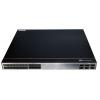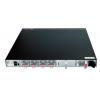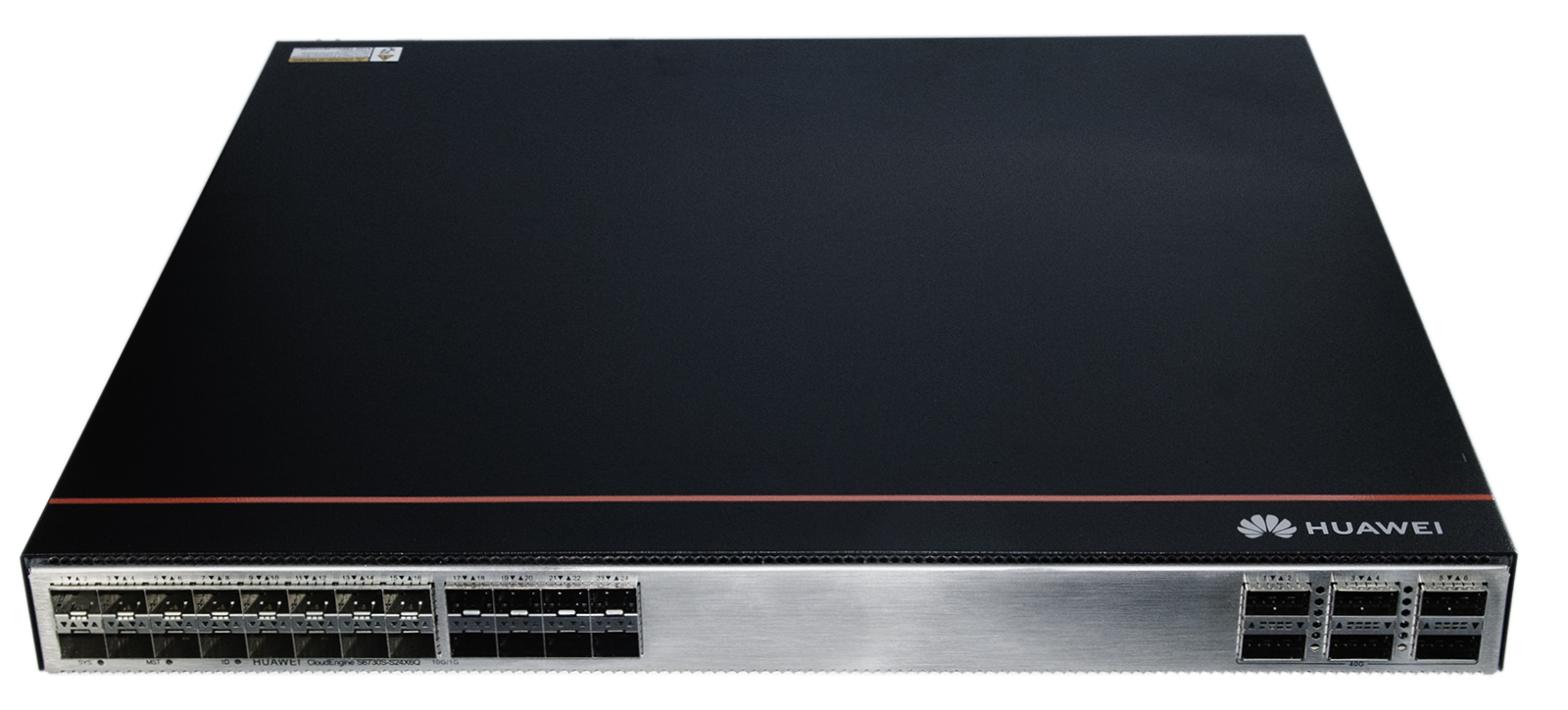-
zł


Huawei S6730S-S24X6Q to wydajny switch z serii CloudEngine. Wyposażony jest w 24 sloty SFP+ o przepustowości 10 Gb/s każdy oraz 6 slotów QSFP+ o przepustowości 40 Gb/s. W zestawie dołączony jest zasilacz AC o zakresie napięcia 100 - 240 V (600 W, maks. 8 A). Switch z powodzeniem może być wykorzystywany przez operatorów internetowych, w kampusach szkolnych lub różnego rodzaju instytucjach.
Oferowany produkt wspiera zaawansowaną obsługę multicast, w tym PIM-SM, PIM-DM, PIM-SSM i Multicast VPN. Posiada również rozbudowane funkcje Layer 3, takie jak RIP v1/2, OSPF, OSPFv3, IS-IS, IS-ISv6, BGP czy BGP4+. Dodatkową zaletą są liczne zabezpieczenia, wykrywa niestandardowy i potencjalnie groźny ruch, analizuje zagrożenia w szyfrowanym ruchu (Encrypted Communication Analytics), może współpracować z Huawei Cybersecurity Intelligence System (CIS).
Dodatkowym atutem jest możliwość wirtualnego stackowania wielu switchy przy pomocy iStack. Urządzenie obsługuje wirtualizację opartą na VXLAN, pozwala na połączenie sieci bezprzewodowej i przewodowej. Może obsłużyć do 1024 punktów dostępowych w jednej sieci, pełni funkcję ich kontrolera (w tym również zarządzania domeną czy szablonami konfiguracji).
Licencja "N1 Basic Software"
Najważniejsze cechy:
- 24 sloty SFP+;
- 6 slotów QSFP+ (40 Gb/s);
- możliwość połączenia sieci przewodowej i bezprzewodowej;
- obsługa VXLAN;
- liczne zabezpieczenia.
Specyfikacja:
| S6730S-S24X6C | |
| Porty |
24 sloty SFP+ 10 Gb/s 6 slotów QSFP+ 40 Gb/s |
| Wymiary | 442 x 420 x 43,6 mm |
| Wysokość | 1 U |
| Wejście zasilania |
Sugerowany zakres napięcia: 100 - 240 V AC (50 / 60 Hz) Maksymalny zakres napięcia: 90 - 290 V AC (45 - 65 Hz) |
| Maks. moc / prąd wejściowy |
600 W Maks. 8 A |
| Maksymalny pobór mocy | 225 W |
| Minimalny pobór mocy | 88 W |
| Dopuszczalna temperatura przechowywania | Od -40 do 70 st. C |
| Głośność | 52 dB |
| Ochrona przeciwprzepięciowa | ±6kV |
| Dopuszczalna wilgotność powietrza | 5%-95% niekondensująca |
| Chłodzenie | Aktywne, 4 odłączalne wentylatory |
| Właściwości oprogramowania | |
|---|---|
| MAC |
Up to 64K MAC address entries |
| VLAN |
4K VLANs |
| ARP |
Static ARP |
| Routing IP |
Static routes, RIP v1/2, RIPng, OSPF, OSPFv3, IS-IS, IS-ISv6, BGP, BGP4+, ECMP, routing |
| Interoperacyjność |
VLAN-Based Spanning Tree (VBST), working with PVST, PVST+, and RPVST |
| Ochrona przed pętlami Ethernet |
RRPP ring topology and RRPP multi-instance Smart Link tree topology and Smart Link multi-instance, providing millisecond-level protection |
| Właściwości IPv6 |
Neighbor Discover (ND) |
| Multicast |
IGMP v1/v2/v3 snooping and IGMP fast leave |
| QoS/ACL |
Rate limiting in the inbound and outbound directions of a port |
| Zabezpieczenia |
Hierarchical user management and password protection HTTPS |
| Inne |
LACP |
| VXLAN |
VXLAN functions, VXLAN L2 and L3 gateways, BGP EVPN |
| SVF |
Acting as the parent node to vertically virtualize downlink switches and APs as one device for |
| iPCA | Marking service packets to obtain the packet loss ratio and number of lost packets in real time Measurement of the number of lost packets and packet loss ratio on networks and devices |
| Zarządzanie i monitorowanie |
Cloud-based management |






 Polski
Polski English
English Italiano
Italiano Español
Español Čeština
Čeština Српски
Српски Deutsch
Deutsch Ελληνικά
Ελληνικά Slovenský
Slovenský




